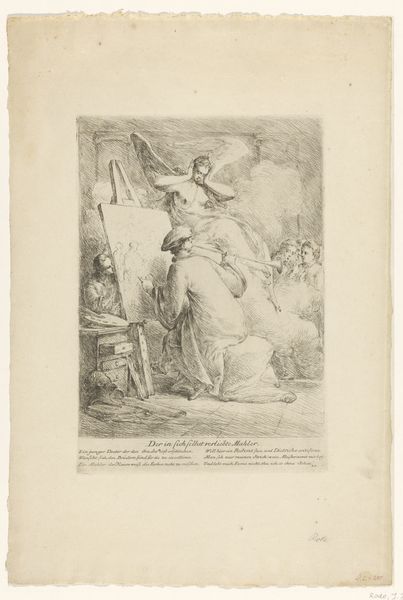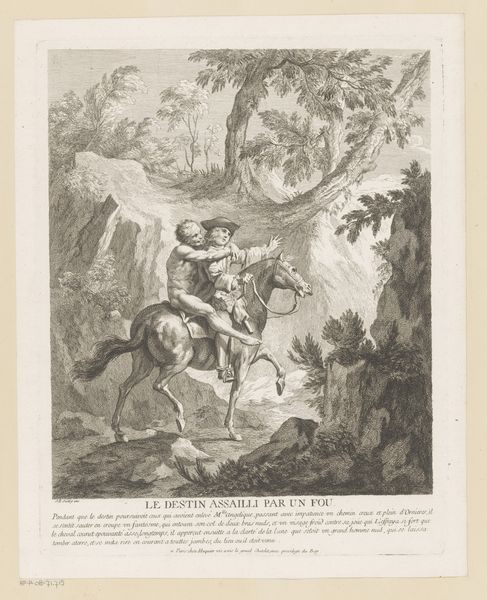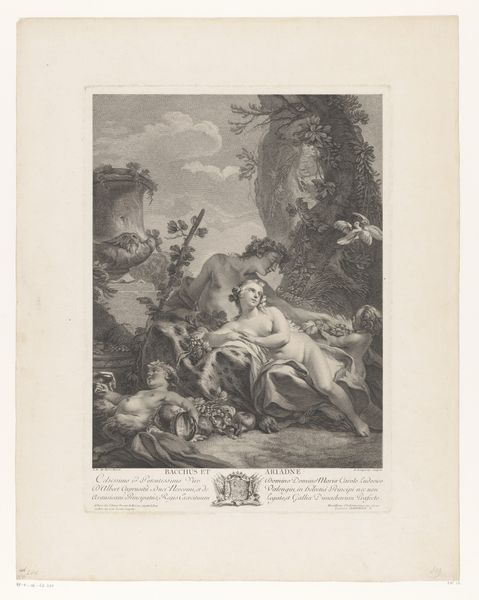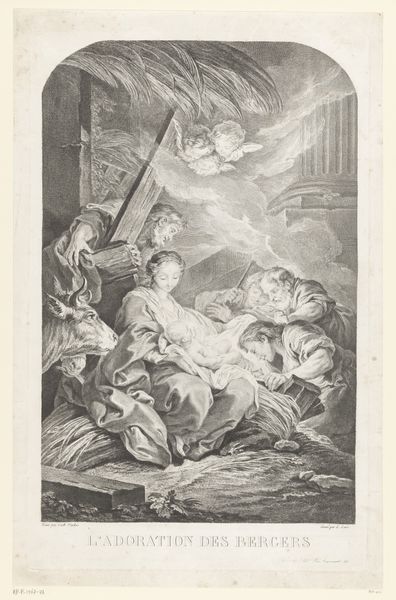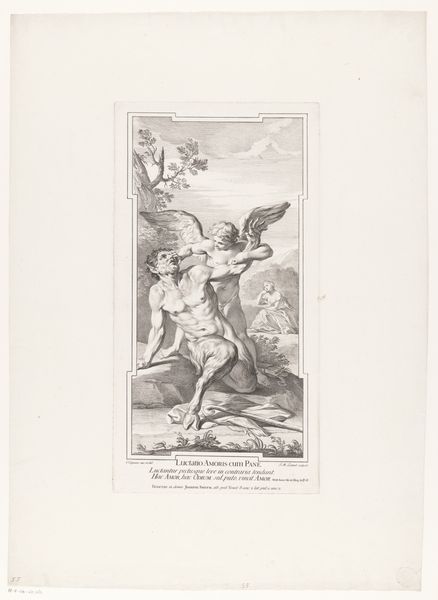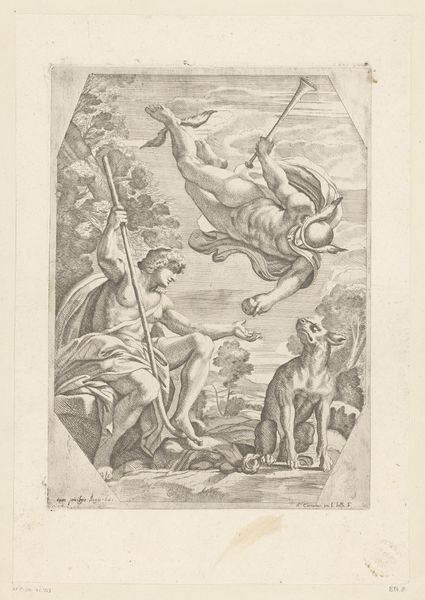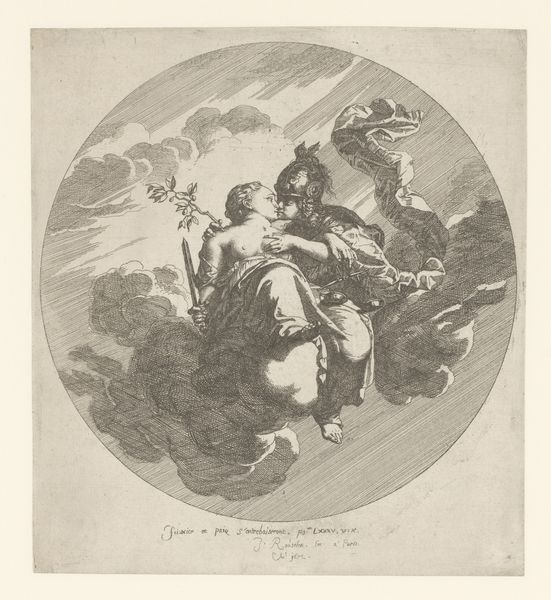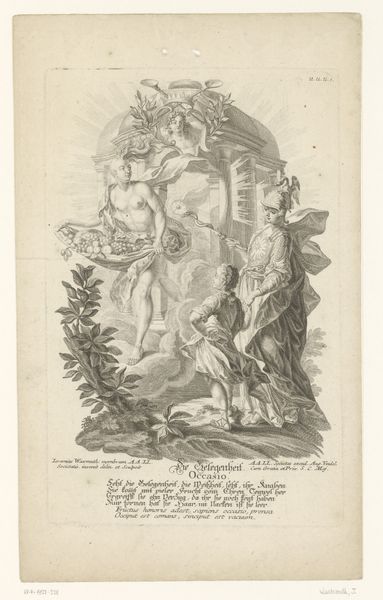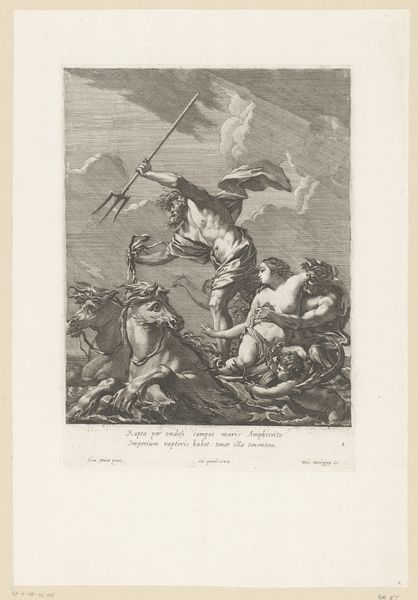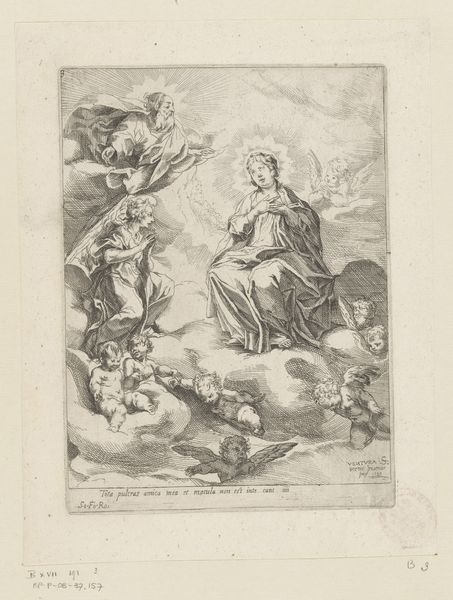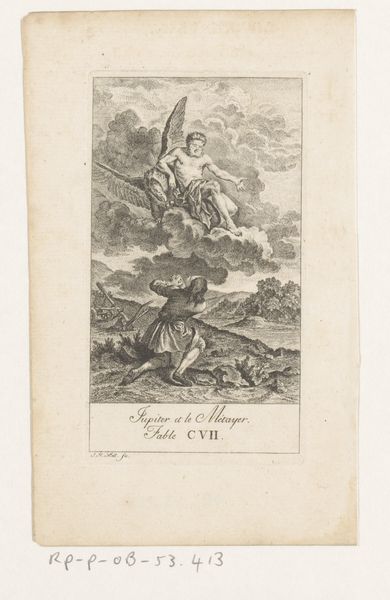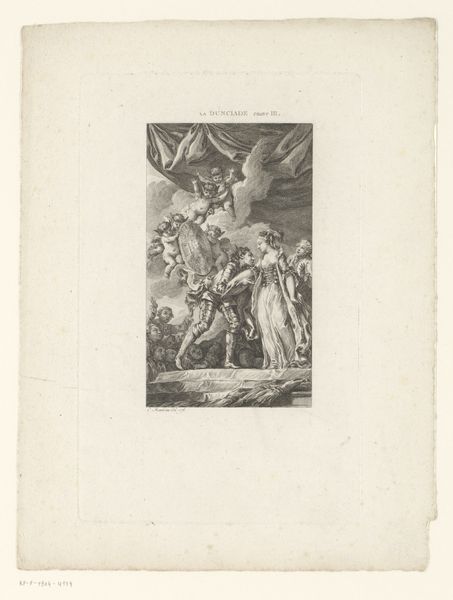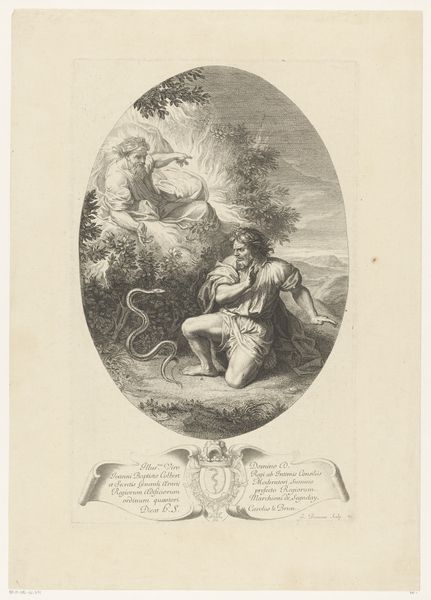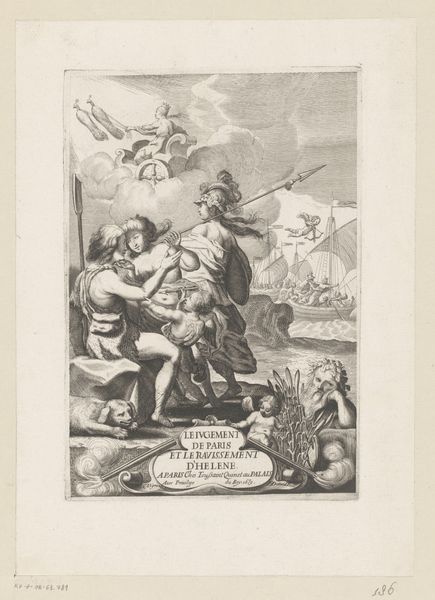
Minerva wijst een jongen op Vadertje Tijd die voorbij vliegt 1721 - 1771
0:00
0:00
print, engraving
#
portrait
#
allegory
#
baroque
# print
#
classical-realism
#
figuration
#
line
#
history-painting
#
engraving
Dimensions: height 292 mm, width 185 mm
Copyright: Rijks Museum: Open Domain
Editor: Here we have Jeremias Wachsmuth's engraving, "Minerva wijst een jongen op Vadertje Tijd die voorbij vliegt," made sometime between 1721 and 1771. It's teeming with figures from mythology. The scale is relatively small, but the allegorical figures feel very imposing and carry heavy historical weight. What story do you think this engraving is trying to tell, and what's its connection to the era in which it was created? Curator: Well, seeing Minerva, or Pallas Athena, pointing a youth toward Father Time is inherently about the didactic role of art. Wachsmuth produced this during a period when printmaking was increasingly influential in shaping public opinion and disseminating knowledge. Consider this piece as part of that broader phenomenon. Editor: So, it's essentially propaganda, then? Teaching morals but in a visual and aesthetically pleasing form. Curator: It’s more nuanced than that. "Propaganda" carries a heavy connotation today. Think about how academies of art were shaping artistic ideals during the 18th century. Works like these, circulating through prints, were helping to codify those ideals, visually teaching about civic duty and the acceptance of societal hierarchies and morals, framed in the guise of classical wisdom. But does the way Time is rendered here -- somewhat feeble looking atop clouds -- suggest a certain attitude to temporal power, too? Editor: That's interesting. I was focused on Minerva, but you're right. Father Time seems… powerless almost. Curator: It invites us to contemplate where power truly lies and what the intended audiences may have derived from the image, particularly if you consider who had access to prints during that era. It's a visual lesson geared towards a very particular segment of society. Editor: I didn't realize the figures pointed at society itself. Seeing it as part of a broader dissemination of knowledge really reframes my understanding of it. Thank you! Curator: And recognizing how an artwork functions within networks of power, production, and reception illuminates its lasting, but always contingent, relevance.
Comments
No comments
Be the first to comment and join the conversation on the ultimate creative platform.
